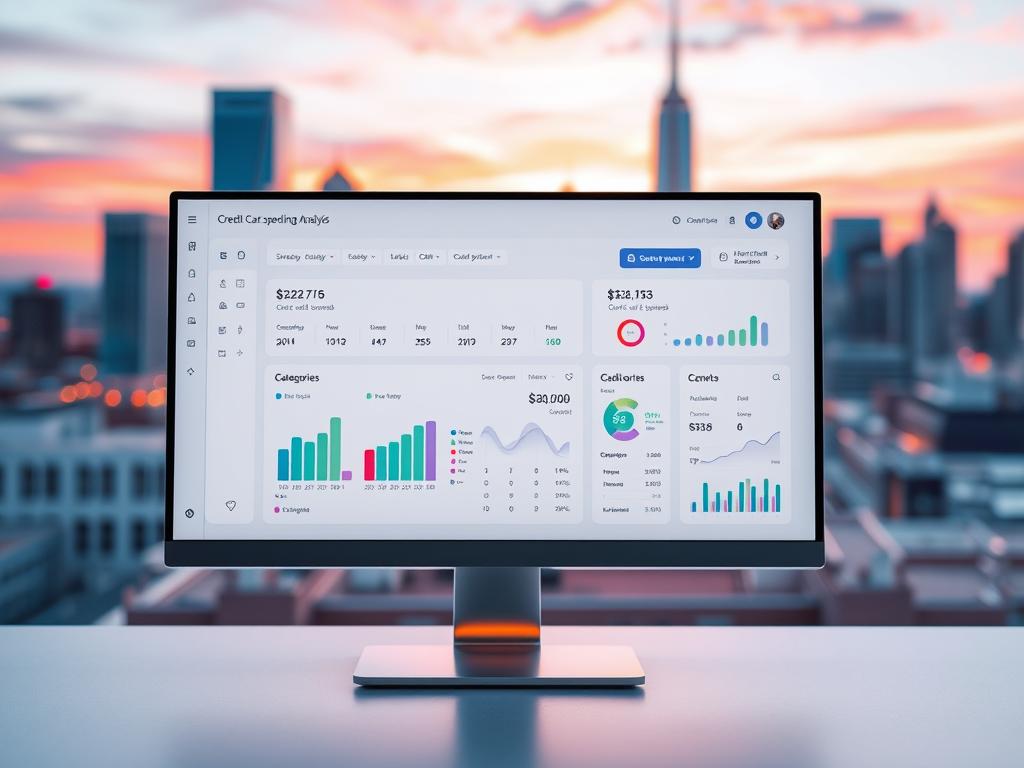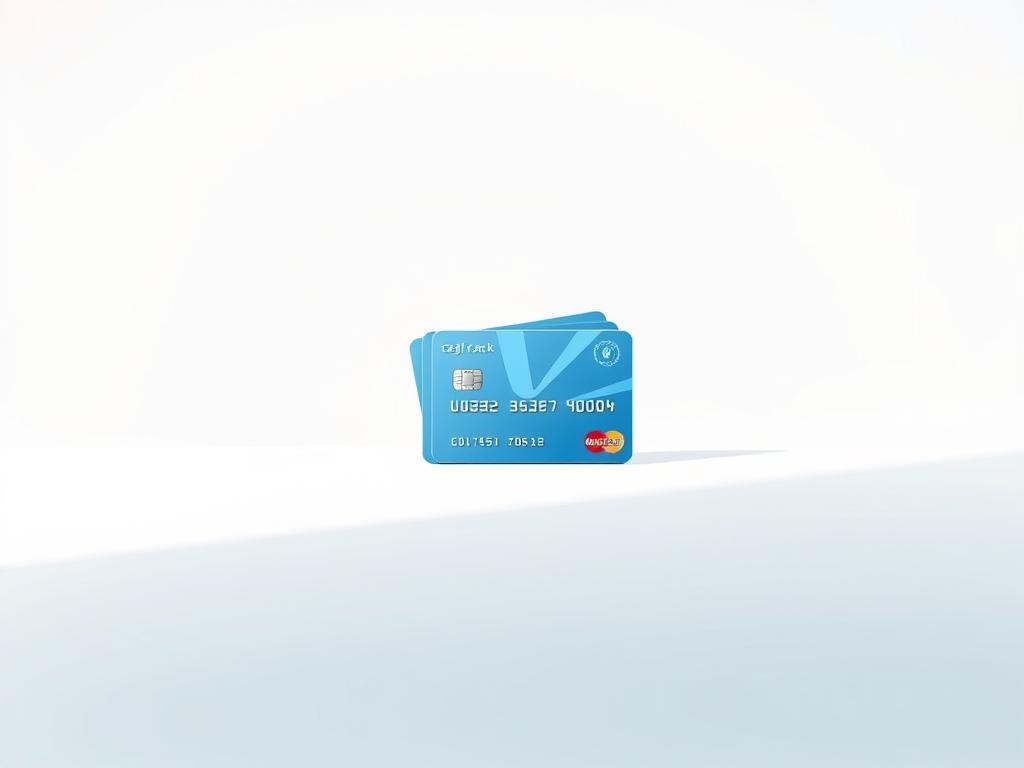Anúncios
With thousands of options available, finding the perfect credit card can feel overwhelming. Your spending habits and credit score play a big role in narrowing down the choices. Whether you want cashback, travel perks, or low interest, matching the right card to your lifestyle is key.
Different types of credit cards cater to specific needs. Rewards cards offer points or miles, while secured cards help build credit. Fees, APR, and approval requirements vary, so comparing options saves money. Tools like Experian’s free monitoring can help assess your eligibility before applying.
Anúncios
This guide simplifies the process by breaking down features, benefits, and potential drawbacks. You’ll learn to weigh rewards against annual fees and identify cards that fit your financial goals.
Key Takeaways
- Match a card to your spending patterns for maximum benefits.
- Check your credit score before applying to avoid rejections.
- Compare rewards, fees, and interest rates side by side.
- Secured cards are ideal for building or repairing credit.
- Use free tools like Experian to monitor your credit health.
Understanding Credit Card Basics
Navigating the world of plastic requires knowing the basics. Your credit score and fee structures shape what’s available to you. Missing these details could cost hundreds yearly.
Anúncios
Why Your Credit Score Matters
Lenders check your score to set rates and limits. A 700+ score unlocks low APR offers, while below 600 may limit you to secured cards. Free tools like Credit Karma help track it.
Common Fees and Rates to Watch For
Annual fees range from $0 to $550. Premium travel cards often justify costs with perks, but budget cards may waive them. Compare value before committing.
Balance transfer fees typically cost 3%–5% of the moved amount. Foreign transactions add up to 3% on non-waived cards.
Late payments trigger fees up to $40 and penalty rates. Wells Fargo’s overdraft protection links checking accounts to avoid declines.
- Variable vs. fixed APRs: Variable rates change with the market, while fixed stay steady (but can still rise with notice).
- 0% intro periods: Offers last 12–21 months—ideal for big purchases or debt consolidation.
Assessing Your Financial Needs and Habits
Your wallet reveals patterns that shape ideal card matches. Whether you dine out often or book flights monthly, aligning plastic with habits maximizes value. Over 53% of cardholders carry *month-to-month* debt—highlighting the need for strategic choices.

Analyzing Your Spending Patterns
Track where your dollars go for 30 days. Groceries, gas, and streaming services add up. Cards like Chase Freedom Flex offer rewards in rotating categories (e.g., 5% back on quarterly bonuses).
Debt-heavy spenders should prioritize low APR or balance transfers. The Federal Reserve notes most Americans don’t pay balances in full. If that’s you, interest savings outweigh points.
Setting Your Credit Card Goals
Define short-term wins versus long-term gains. A secured card helps build credit, while travel cards unlock lounge access ($100–$300 value annually). Compare trade-offs:
- Annual fees: A $95 fee breaks even with a $200 travel credit.
- Hybrid perks: Some cards mix cashback and travel miles.
- Upgrade paths: Starter cards often lead to premium options.
“Aim for cards that grow with your financial journey—not just today’s needs.”
Types of Credit Cards to Consider
Different financial goals call for different plastic solutions. Whether you want cashback, lower interest, or a tool to strengthen your *credit history*, there’s a match for your needs. Here’s a breakdown of the top categories.
Rewards Credit Cards
These cards pay you back for spending. Some offer rotating 5% categories (like Discover it®), while others give flat-rate cashback. If your *habits* include dining or travel, cards like Chase Sapphire Preferred add extra value.
Balance Transfer Credit Cards
Carrying debt? Cards with 0% intro APR periods (12–21 months) let you pause interest. Watch for transfer fees (3%–5%), but the savings often outweigh costs. Example: Citi Simplicity.
Secured Credit Cards
Ideal to *build credit*, these require a refundable deposit ($200–$500). Your limit usually matches the deposit. Capital One Secured Mastercard reports to all three bureaus, helping your *credit history*.
Student and Starter Cards
Designed for beginners, these often have lower limits ($300–$1,500) and perks like Amazon Prime Student discounts. Discover it® Student offers 5% cashback in rotating categories. Capital One Journey rewards on-time payments with a 0.25% bonus.
| Feature | Student Cards | Secured Cards |
|---|---|---|
| Credit Limit | $300–$1,500 | Matches deposit |
| Approval Requirements | Enrollment proof, no/low score | Deposit, no credit check |
| Perks | Campus discounts, cashback | Credit-building focus |
“Discover’s 7-month review can upgrade students to unsecured cards with higher limits.”
Co-signers may boost approval odds for students, but they share liability. Compare options side by side to align with your financial stage.
How to Choose the Right Credit Card for Rewards
Rewards cards turn everyday purchases into valuable perks. The key is pairing your spending patterns with programs that offer the highest returns. Whether you prefer cash back or travel miles, strategic selection can net hundreds in annual value.
Cash Back vs. Travel Rewards
Cash-back cards like U.S. Bank Cash+® let you pick two bonus categories for 5% returns (up to $2,000/quarter). Travel cards often offer fixed-rate miles but may require loyalty to specific airlines. Consider redemption flexibility:
| Type | Best For | Redemption Value |
|---|---|---|
| Cash Back | Budget-conscious users | 1¢–5¢ per point |
| Travel | Frequent flyers | Up to 2¢ per mile |

Maximizing Bonus Categories
Cards like Discover it® offer 5% back in rotating categories (e.g., groceries, gas) but require quarterly activation. Miss the deadline, and you’ll earn just 1%.
“Set calendar reminders for category changes—most programs reset on January 1, April 1, July 1, and October 1.”
Pair multiple cards to cover all spending types. Note exclusions—Walmart and Target often don’t qualify as grocery stores. Premium cards may offer broader category definitions.
Low-Interest and 0% APR Cards
Cutting interest costs starts with understanding low-rate card options. These tools help manage debt or finance large purchases without hefty fees. Some even offer 0% APR for a set period, giving you time to pay.
When to Use a Balance Transfer
Moving high-interest debt to a card with a promotional rate saves money. For example, Citi Simplicity offers 21 months of no interest on transferred balances. But watch for fees—3%–5% of the moved amount is typical.
Best scenarios for transfers:
- You can pay off the balance before the 0% APR ends.
- The transfer fee is less than what you’d pay in interest otherwise.
Intro APR Periods Explained
These temporary rates apply to purchases or transfers. Wells Fargo Reflect® gives 18 months, extendable with on-time payments. Note: Store cards often charge retroactive interest if unpaid by the deadline.
| Card | Purchase APR Period | Transfer Fee |
|---|---|---|
| Citi Simplicity | 21 months | 3% |
| Wells Fargo Reflect® | 18 months | 5% |
“Medical financing cards like CareCredit often bypass retroactive interest—check terms carefully.”
Credit Cards for Building or Rebuilding Credit
Not all plastic helps when your score needs a boost. Secured and subprime options dominate this space, but their costs vary wildly. Matching your needs to the right tool saves money and speeds progress.

How Secured Cards Work
These require a cash deposit ($200–$500) that becomes your limit. Capital One’s secured card reports to all three bureaus, turning payments into credit history. After 12 months of on-time use, many upgrade to unsecured cards.
- No credit check: Approval hinges on your deposit, not past mistakes.
- Refundable: Get your deposit back when closing the account in good standing.
- Lower risk: Banks face no loss if you default.
Avoiding Pitfalls with Subprime Cards
Some lenders target low-score applicants with brutal terms. First Premier® charges a $125 annual fee plus 36% APR. Credit One Bank® adds monthly fees ($8–$10). Analyze the total cost:
| Card | APR | Fees (First Year) |
|---|---|---|
| First Premier® | 36% | $125 + $10/month |
| Secured Card | 22% | $0–$49 |
“Subprime cards often cost more than they’re worth. Explore alternatives like credit-builder loans first.” — FTC Consumer Alert
Predatory lenders bury fees in fine print. The FTC’s free guide helps spot abusive terms. Local credit unions often offer better deals for rebuilding credit.
Specialty Credit Cards
Specialty cards unlock unique benefits beyond standard rewards. These target specific spending, like retail purchases or travel, with tailored perks. While often niche, their value can outweigh general-purpose options.
Store and Co-Branded Cards
Retailers partner with banks to offer discounts or points redeemable for merchandise. Amazon Prime Visa gives 5% back at Amazon, while Target’s REDcard waives online shipping fees.
Watch for limitations:
- Rewards may expire or lose value if unused.
- High APRs (up to 30%) apply if balances aren’t paid monthly.
Travel and Airline Cards
Premium options like Amex Platinum® offset their $695 annual fee with a $200 airline credit and lounge access. United Club℠ Infinite includes $650 worth of lounge visits annually.
Key features to compare:
- Companion certificates: Free tickets often require booking specific fare classes.
- Foreign transaction fees: Most travel cards waive these (typically 3%).
- Baggage delay coverage: Reimburses essentials after 6+ hour delays.
“Elite-qualifying night accelerators on hotel cards fast-track status—valuable for frequent travelers.”
Comparing Credit Card Offers
Not all offers are created equal—some cards deliver more value than they cost. The secret lies in decoding terms and running the numbers. A card with a $95 fee might net $300 in benefits, while a no-fee option could leave money on the table.
Reading the Fine Print
Look beyond flashy sign-up bonuses. Chase Sapphire Preferred® charges $95 yearly but includes a $50 hotel credit. American Express® Gold Card’s $250 fee is offset by $240 in dining credits. Always check:
- Expiration dates on statement credits
- Minimum spending for bonus points
- Foreign transaction fees (typically 3%)
Penalty APRs often jump to 29.99% after one late payment. Some cards like Citi® Diamond Preferred waive this for first-time slips.
Calculating Annual Fee Value
Use this formula: (Rewards + Perks) – Annual Fee = Net Value. For example:
| Card | Annual Fee | Credits | Net Value |
|---|---|---|---|
| Amex Gold | $250 | $240 | -$10 |
| Chase Sapphire | $95 | $50 | -$45 |
“Call retention departments before renewal—many waive fees or offer bonus points to keep you.”
Non-monetary benefits like airport lounge access or concierge services add hidden value. Premium cards often include:
- Travel insurance up to $10,000
- Extended warranty protection
- Price matching on purchases
Downgrade paths exist if fees stop making sense. Chase lets product changes to no-fee Freedom Unlimited®.
How to Apply for a Credit Card
Submitting an application marks the first step toward financial flexibility. Lenders review your credit score, income, and debt-to-income ratio. Preparation prevents avoidable rejections and hard inquiries on your report.
Boost Your Approval Chances
Check your FICO score before applying. Scores below 580 may trigger automatic denials. Pre-qualification tools show likely approvals without dinging your report.
Reduce outstanding balances below 30% of limits. High utilization signals risk. Pay down debts 60 days before applying for best results.
- Add authorized user history from family members with strong credit.
- Opt for secured cards if rebuilding—Capital One reports to all three bureaus.
- Space applications 6 months apart to avoid seeming desperate for credit.
When You’re Denied
The FCRA requires lenders to send adverse action notices explaining rejections. These detail the specific reasons—like low score or high debt. Use this to fix issues before reapplying.
“Under federal law, you have 60 days to request reconsideration from most issuers. Call within 7 days for highest success rates.”
Dispute errors on your report within 30 days. Common fixes include:
- Removing outdated late payments
- Correcting balance inaccuracies
- Adding missing positive accounts
| Issuer | Reconsideration Window | Contact Method |
|---|---|---|
| Chase | 30 days | Recon line: 1-888-245-0625 |
| Amex | 60 days | Online chat |
| Capital One | 7 days | Call center |
Sample script for reconsideration calls: “I’ve addressed the issue noted in my denial letter by [specific action]. Could you review my application with this update?”
Conclusion
Smart financial decisions start with aligning plastic perks with your lifestyle. Follow this framework: check your credit score, assess needs, compare types, and apply strategically.
Review your credit card yearly. Life changes—so should your plastic. Tools like Experian’s free monitoring help track progress.
Don’t settle for mismatched rewards or high fees. A quick checklist ensures value:
- Verify annual fees against benefits
- Match rewards to spending habits
- Plan for emergencies (e.g., low APR options)